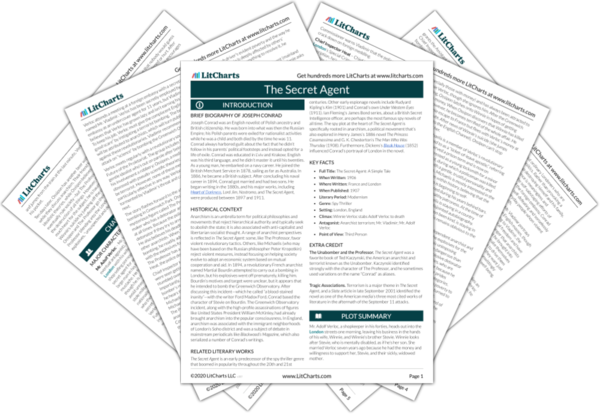The Professor doesn’t have some abstract revolutionary goal—he just wants to
destroy, and to do it perfectly. Ossipon is uncomfortable with this bare motivation. The Professor sees this as his whole problem. Revolutionaries are locked in conflict with the things they want to overturn (like the law) and flinch in the face of a real solution—that is, destruction. The Professor’s willingness to destroy everything, including himself, makes him a more genuine anarchist in his own eyes.
